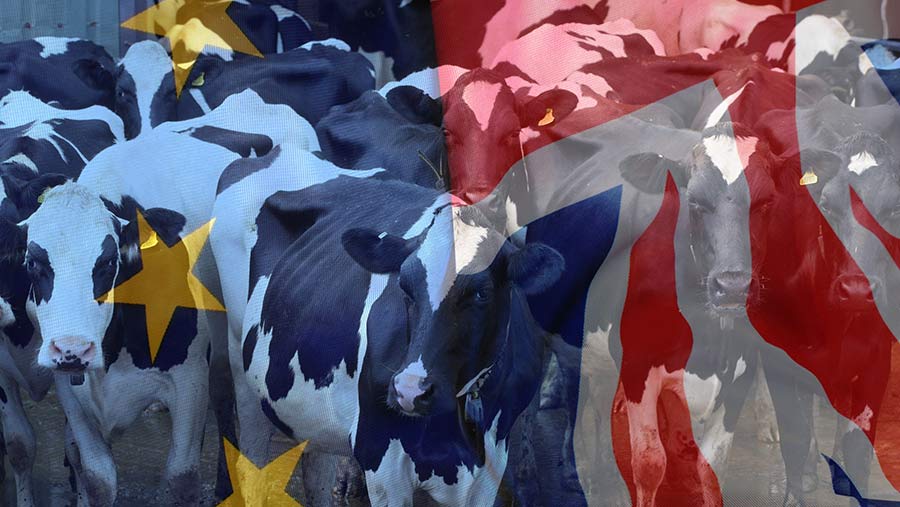What opportunity does Brexit offer UK dairy farmers?
 © Tim Scrivener and ING Image
© Tim Scrivener and ING Image When we think of leaving the EU, we think of what we know, which could include the removal of farm subsidies as we know them today.
Another definite is the industry will no longer be supported by intervention. This is when the EU buys milk products when the price is low and supply is high and then sells them when the market shows demand. However, this can be expensive if there is no demand for the product – as is the case at the moment.
However, the Conservative government has assured farmers of the same level of subsidies until 2022 and with the potential of a coalition, this should give UK farmers some security.
See also: Farmers fear Brexit backslide after shock election result
While the likely eventual removal of support will reduce our direct payments and could have negative effects on many farm business profits, we must focus on the short-term positives of this support continuing.
If support continues until 2022 it will create a potential sweet spot for investment to meet the growing demand Brexit will create for dairy produce.
However, this has to come from the whole dairy sector, with leadership from the processors and retailers – not just at the raw material production end.
Increased demand and currency opportunities
With milk and milk products supply not sufficient to meet UK demand, this, alongside investment, represents a potential opportunity for the UK dairy industry to negotiate it’s own trade arrangements and increase exports worldwide after Brexit.
It is most likely that when we leave the EU, sterling could hit a new low (there was a 10% drop after the referendum, making all goods coming in more expensive).
These rises will result in higher inflation and possible milk price increases, but this will still be tempered against the basic rules of supply and demand. It will also increase most producers’ cost of production and make it more expensive to import cheese and other dairy products, while exports will be cheaper.
The question is, could the dairy industry create products for these new markets with high-added-value products such as cheeses and yogurt? The answer should be yes, or a rather, why not?
Unlike other areas of UK agriculture, the domestic dairy industry has an advantage over our Continental neighbours. Firstly, the UK’s high welfare and grazing methods appeal to the consumer and makes people want to pay a premium for our produce.
The other benefit of grazing cows is that it is the cheapest form of feed for milk production. Therefore the industry is in a position to take advantage of this natural resource to lower cost of production – not unlike what New Zealand farmers did when they lost their subsidies.
How to meet this potential
To realise this potential, rather than do nothing until 2022 we must invest in developing added-value products such as cheese and yoghurt, which have a new market export potential.
Realistically not everyone can make and successfully sell cheese, yoghurt and other added-value products, and we still need liquid milk. The farmers producing milk must invest in things that are going to make them money in the future – cows – not expensive production systems that demand more capital and complication.
It’s a lot easier to cut and control your costs than it is to try to chase the income and squeeze litres out of cows and hope for a better milk price. Be smart and run a business that is less exposed to imports, maximises export potential by producing high-quality milk and reduces its reliance on support.
And ultimately everyone, from farmers to processors, need to send a great message to the consumer that they are open for business.
